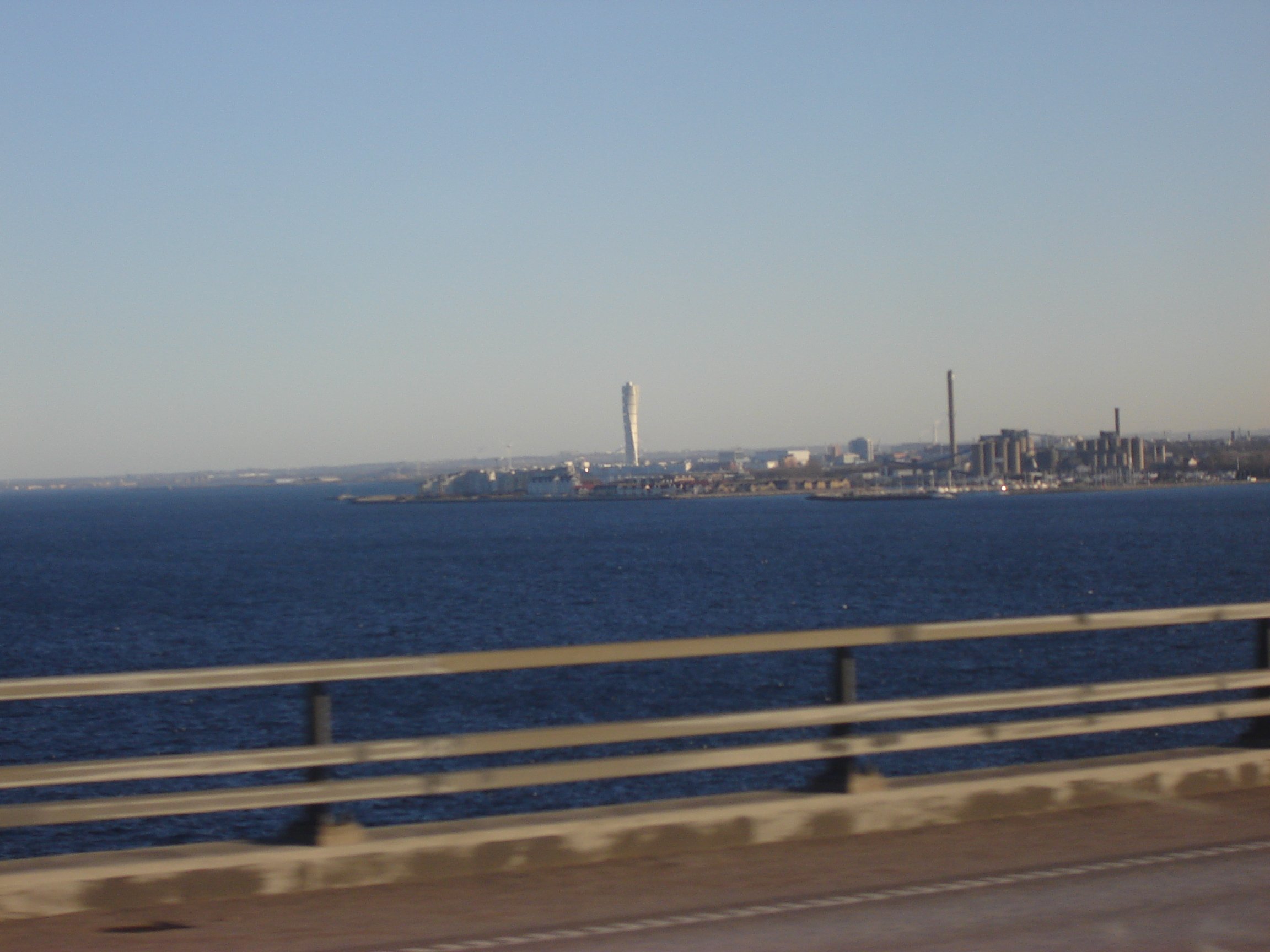MALMÖ, SWEDEN
My short visit to Sweden's 3rd largest city was a bit of a geek-out mission to check out two unique construction projects in a see-it-for-myself kinda way...
I ended up making the bus-trip over twice in the same day just to try and glimpse a bit more. At times, humanity truly is capable of some staggeringly amazing accomplishments.
Øresund Bridge
Now, a bridge may seem like dry subject matter for many, but being a fan of large-scale engineering projects, a trip over the Øresund bridge that connects Denmark to Sweden was a must-see & must-traverse experience.
I approached it from Denmark where it begins as the 4km long Drogden Tunnel on the Danish island of Amager. The tunnel burrows beneath the sea (the Øresund strait) before beginning an incline into the artificially made island of Peberholm in the middle of the strait. The roadway is then spit out from this island where the bridge itself begins and spans almost 8km into Malmö, Sweden.
The tunnel portion of the connection was undertaken to avoid interfering with air traffic coming to and from Copenhagen airport, to provide a clear channel for ships in good weather or bad, and to prevent ice floes from blocking the strait.
Construction of the bridge began in 1995 and was completed 5 years later. The structure has a mass of 82,000 tonnes and supports two railway tracks beneath four road lanes in a horizontal girder extending along the entire length of the bridge. During construction, 16 unexploded World War II bombs were discovered on the seafloor where the tunnel segment was planned to rise. During construction, compression spring dampers with laser gauges were installed for ongoing monitoring to counter vibration issues caused by the bridge moving under certain wind and temperature conditions.
The cost for the tunnel & bridge portions, including motorway and railway connections on land, was about 4 billion euros ($5.5 billion CAN) based on the 2000 year price index. The connection is tolled, with all expenses expected to be recouped by 2037.
My own pictures behind the glass of a moving bus are less-than-stellar, so here’s an aerial pic I grabbed online to help capture its scope & enormity.
What a marvel of engineering.
City Walkabout
Once off the bus, I popped in the earbuds and let ABBA doing the singing as I browsed this modern, but also traditional European city on a bright morning.
Turning Torso
What can I say? I find construction cool. Turning Torso (the English name is used also in Swedish) is a neo-futurist residential skyscraper in Malmö and the tallest building in Scandinavia.
Regarded as the first twisting skyscraper in the world, it was designed by Spanish architect, structural engineer, sculptor and painter Santiago Calatrava. Although it looks like it would actually turn, it's immobile; constructed in nine segments of five-story pentagons that twist relative to each other as it rises.




































